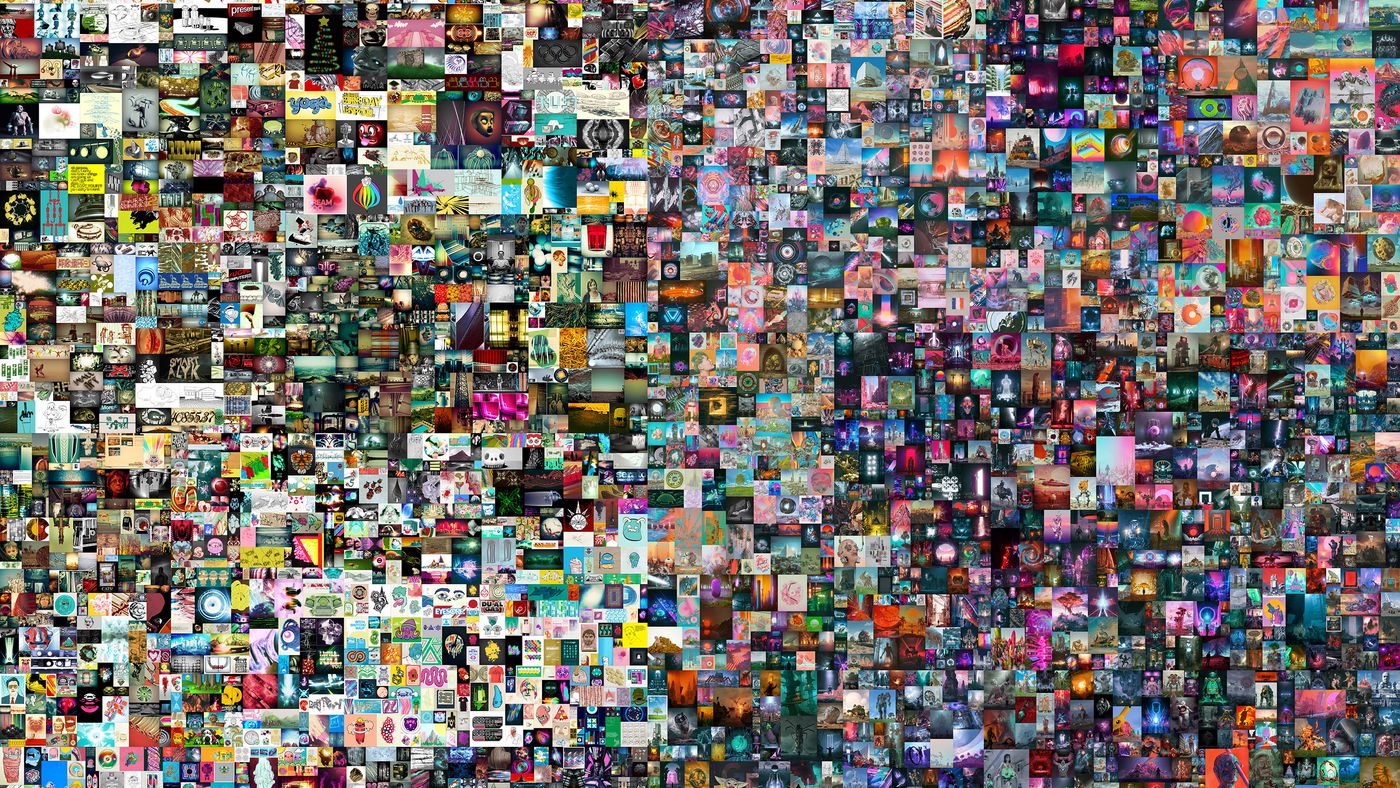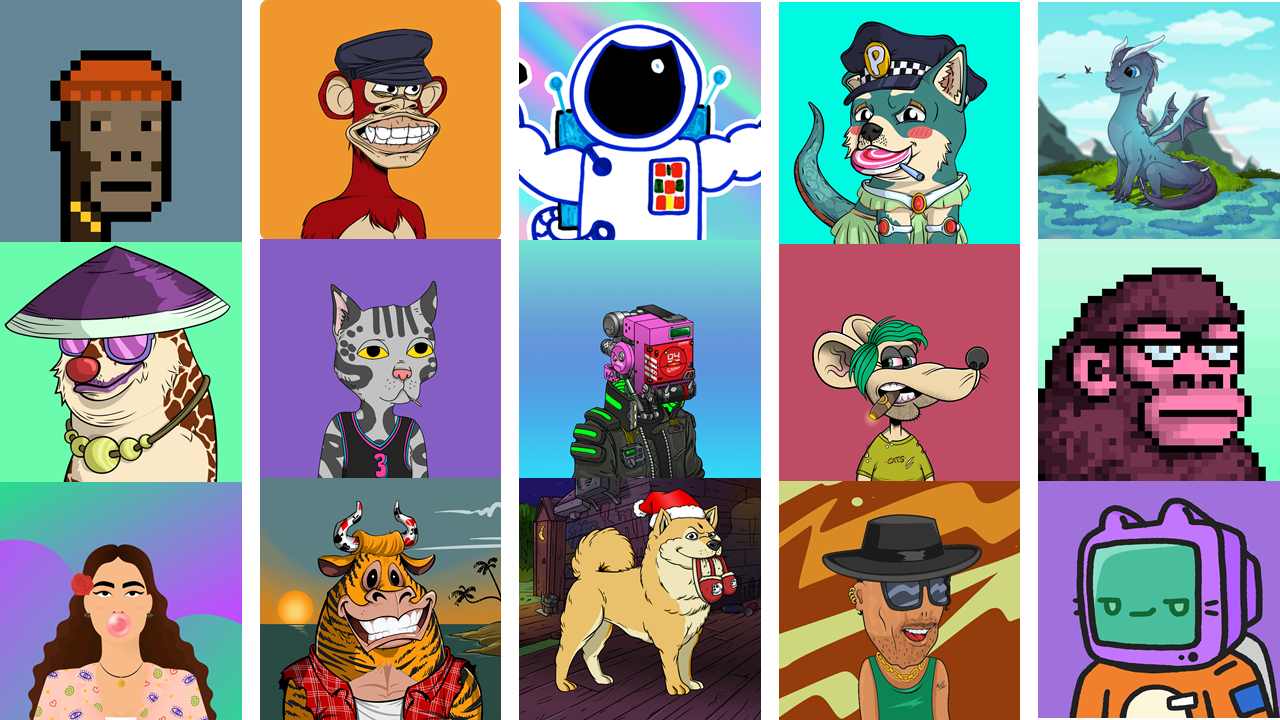This article was published as a part of the Data Science Blogathon.
Introduction
You have surely come across images like this on the Internet and have read that they are quite valuable!

Source: https://www.ledgerinsights.com/adidas-joins-the-nft-world-partnering-with-bored-ape-the-sandbox-coinbase/
But, why? Why are they so valuable and what is so special about them?
Well, this is because they are NFTs. So, now let us understand what are NFTs?
The Basics of NFTs
Non-fungible tokens (NFTs) are non-fungible tokens that are generated using the same sort of programming as cryptocurrencies. NFTs are built on Blockchain technology like Bitcoin or Ethereum. NFTs cannot be exchanged or modified due to their unique nature. Physical money and cryptocurrency are both fungible, i.e. they may be sold or swapped for one another.
NFTs function on top of a blockchain network and are shown as digital assets. This guarantees that NFTs may be moved quickly, securely, and affordably from wallet to wallet. NFTs are transparently verifiable since they were created on top of a blockchain network. The distinction between NFTs and the aforementioned digital currencies is that each token may be identified by a distinctive transaction hash. Simply put, this indicates that no two NFTs are the same.
Relation Between NFTs And Cryptocurrencies
Cryptocurrency, like the money in your bank account, is what you utilize for any blockchain transactions. Cryptocurrency may be bought or changed into fiat currencies (dollars, euros, yen, and so on) through crypto exchanges. An NFT, on the other hand, is one-of-a-kind and irreplaceable asset acquired using bitcoin. It, like a popular trading card or a one-of-a-kind work of art, can grow or lose value regardless of the money used to purchase it.
NFTs are non-fungible, whereas on the other hand cryptocurrencies are fungible.

Source: https://tokenhell.com/how-to-buy-and-sell-nfts-a-complete-guide/
It’s helpful to think about typical fiat currency to better grasp this. You wouldn’t open your wallet and say, “Which 100 rupee note do you want?” if we asked for INR 100. It would be pointless to do so because each INR 100 note symbolizes the same item and may be swapped for another INR 100 note. This is due to the fungibility of the Indian Currency. Cryptocurrencies are fungible as well. They aren’t one-of-a-kind and may be readily sold and replaced.
Non-fungible transistors, on the other hand, are unique in that no two are the same. Each NFT is a one-of-a-kind data unit that cannot be replaced by an identical version since no such thing exists.
The allure and desirability of NFTs are enhanced by their rarity and distinctiveness. This scarcity allows individuals to sell their NFTs for premium rates, as it does with all rare things.
The Buzz around NFTs
The situation has only become more complicated in the year since NFTs became popular. Ape paintings have sold for tens of millions of dollars, reports of million-dollar hacks of NFT projects abound, and corporate cash grabs have only gotten worse.
A collection of NFTs by digital artist Beeple sold for nearly $69 million in early March 2021. It was one of the most expensive digital art pieces ever sold. Beeple’s first 5,000 days of labor were collaged into the artwork.

Source: https://www.theverge.com/2021/3/11/22325054/beeple-christies-nft-sale-cost-everydays-69-million
In the NFT market, there is a lot of competition. The current industry standard is Ethereum, but one collector thinks Cardano could soon overtake it.
As the crypto cold bites harder, NFT trading has recently suffered. To become the industry standard, networks like Cardano are still in a fierce rivalry with others like Bitcoin.
The Popularity of NFTs
NFTs have been around for a while, but they have started gaining high popularity in recent times due to many factors. The first, and arguably most evident, is the normalcy and enthusiasm around cryptocurrencies and the blockchain frameworks that underpin them. Beyond the technology, there’s a mix of fandom, royalty economics, and scarcity laws. Consumers holding NFT value it as a piece of art or even an investment tool. People who invest in it, support the idea of Web 3.0.
When someone buys a non-fungible token, they become the owner of the material, but it may still be shared on the Internet. An NFT might gain popularity in this way since the more it is seen online, the more value it creates.
When it comes to NFTs, authenticity is key. Digital collectibles feature distinctive information that sets them from others and makes them simple to verify, thanks to the blockchain. They also can’t be directly swapped with one another (like playing cards in real life), unlike cryptocurrencies, because no two are alike. The main important factor regarding NFTs is that they are authentic and genuine.
How do NFTs work?
NFTs are a means to verify Art and Digital Property and they are based on Cryptocurrencies. Cryptocurrencies are appropriate as a safe means of transaction in the digital economy because of their fungibility.

You are acquiring a digital asset that has already been generated by someone else when you acquire NFT tokens. NFTs have ownership data which makes it easy to identify the owner of the NFT, just like Bitcoin. This ensures the owner the safety of owning an NFT.
Your digital artwork is first registered on Blockchain when you post your NFT on a marketplace, saying that you (your address) own the specific NFT. This is done by paying something called a gas fee (transaction cost) for utilizing the Blockchain. You now have complete ownership, which nobody—not even the owner of the marketplace—can amend or change.
The Importance of NFT
With the launch of NFT, creators and artists may now commercialize their work without the need for a middleman such as an art gallery or record company. This leveling of the playing field aids in removing the friction that occurs in the business and contributes to the high cost of fine art. As NFT platforms remain available to everyone in the digital environment, it has also created another opportunity for purchasers to support their favorite creators.
To be clear, neither the concept of digital representations of physical goods nor the use of unique identification is new. NFTs made the implementation easier.
Market efficiency is a very big advantage of the usage of NFTs. Converting a physical item to a digital asset simplifies operations and eliminates middlemen. NFTs on the blockchain represent digital or physical artwork, removing the need for agencies and allowing artists to communicate directly with their fans.
Non-fungible tokens are also great for managing identities. It is conceivable to simplify the entrance and leave processes for countries by transforming individual passports into NFTs, each with its unique distinguishing qualities.
Some FAQs
Here are some common FAQs regarding NFTs.
- Are NFTs an important tech of the Future?
It’s difficult to predict if NFTs will become more commonly employed in the future. There is a lot of interest in them right now, and they have a lot of potential benefits. However, the technology is still in its early stages, and there are several obstacles to overcome.
- What are Smart Contracts?
Smart contracts are yet another exciting aspect of blockchain technology. They may hold instructions that are carried out when specific criteria are satisfied. As a result, an NFT with a smart contract might provide artists with a portion of the profit if it is sold in the future.
- Will NFTs die off or are they going to stay?
NFT has exploded in the past 1 year and has generated a lot of buzz and interest. Given their use and benefits, they are going to stay.
Conclusion
Here we had a look at what NFT is, and how is it useful. Right present, NFTs are still in their infancy. With the technology’s seemingly unlimited possibilities, it’s anyone’s guess where they will go next.
- Tokenizing these real-world tangible goods makes them more economical to acquire, sell, and trade while also lowering the risk of fraud.
- NFTs have long been theorized to play a role in the future metaverse, primarily by serving as a digital version of the actual goods you own. This might happen to your digital avatar as well. Items and skins can be transferred between all games that use that blockchain if NFTs are used to represent items in a video game on a unified blockchain.
- NFTs and Digital art are a great way to store assets digitally on the internet. With time, they will lead to more possibilities.
The media shown in this article is not owned by Analytics Vidhya and is used at the Author’s discretion.





